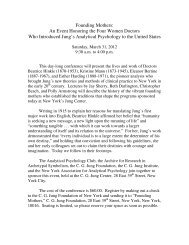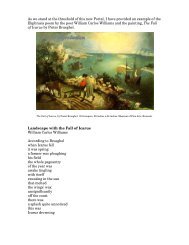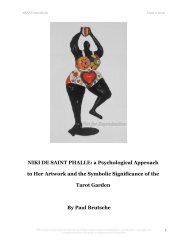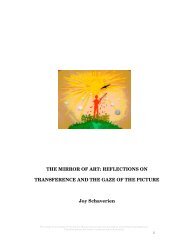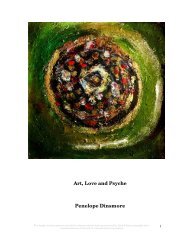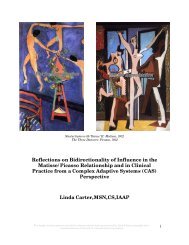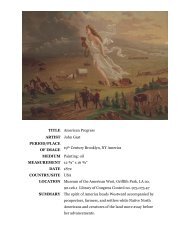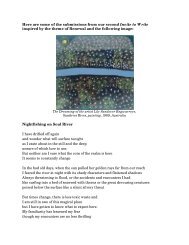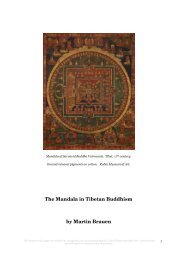Pictorial Space throughout Art History: Cézanne and ... - ARAS
Pictorial Space throughout Art History: Cézanne and ... - ARAS
Pictorial Space throughout Art History: Cézanne and ... - ARAS
You also want an ePaper? Increase the reach of your titles
YUMPU automatically turns print PDFs into web optimized ePapers that Google loves.
<strong>ARAS</strong> Connections Issue 2, 2012<br />
After the School of Paris <strong>Cézanne</strong>'s influence diminished. Hopper's<br />
paintings have plastic qualities as do some of de Chirico's <strong>and</strong> Balthus' paintings.<br />
Knowledge of pictorial space was brought to the United States by Hofmann who<br />
had been in Paris from 1904 to 1914. Hofmann taught in Munich from 1914 <strong>and</strong><br />
then in New York from the 1930s until the 1950s |18|. Erle Loran acknowledged<br />
Hofmann's influence <strong>and</strong> also learned from Cameron Booth who had studied<br />
with Hofmann in Munich. Robert Casper studied in New York with Hofmann <strong>and</strong><br />
with Cameron Booth.<br />
<strong>Pictorial</strong> space in the literature<br />
To study pictorial space you must study plastic paintings but, to do this,<br />
you must know beforeh<strong>and</strong> which paintings are plastic. Because pictorial space is<br />
extraordinarily difficult to achieve you should assume it only in the masters listed<br />
above <strong>and</strong>, even in their work, not always. <strong>Cézanne</strong> did not always achieve it (he<br />
sometimes threw unsuccessful paintings out the window of his studio; his dealer<br />
retrieved several from the branches of a tree) <strong>and</strong> Picasso sometimes worked too<br />
quickly to be plastic. It is hard to distinguish a plastic painting from one which is<br />
not: the eye is seduced by subject matter, color, composition <strong>and</strong> expression.<br />
Without training you may see pictorial space only as a mysterious authority. Most<br />
critics <strong>and</strong> art historians discuss pictorial space not at all or in a cursory or<br />
misleading fashion: for example neither Kenneth Clark nor Herbert Reed<br />
discussed it. <strong>Pictorial</strong> space has to be understood by the eye: verbal logic or<br />
metaphor won't do it. The few explanations are by artists. The sculptor Adolph<br />
The images in this paper are strictly for educational use <strong>and</strong> are protected by United States copyright laws. 6<br />
Unauthorized use will result in criminal <strong>and</strong> civil penalties.



